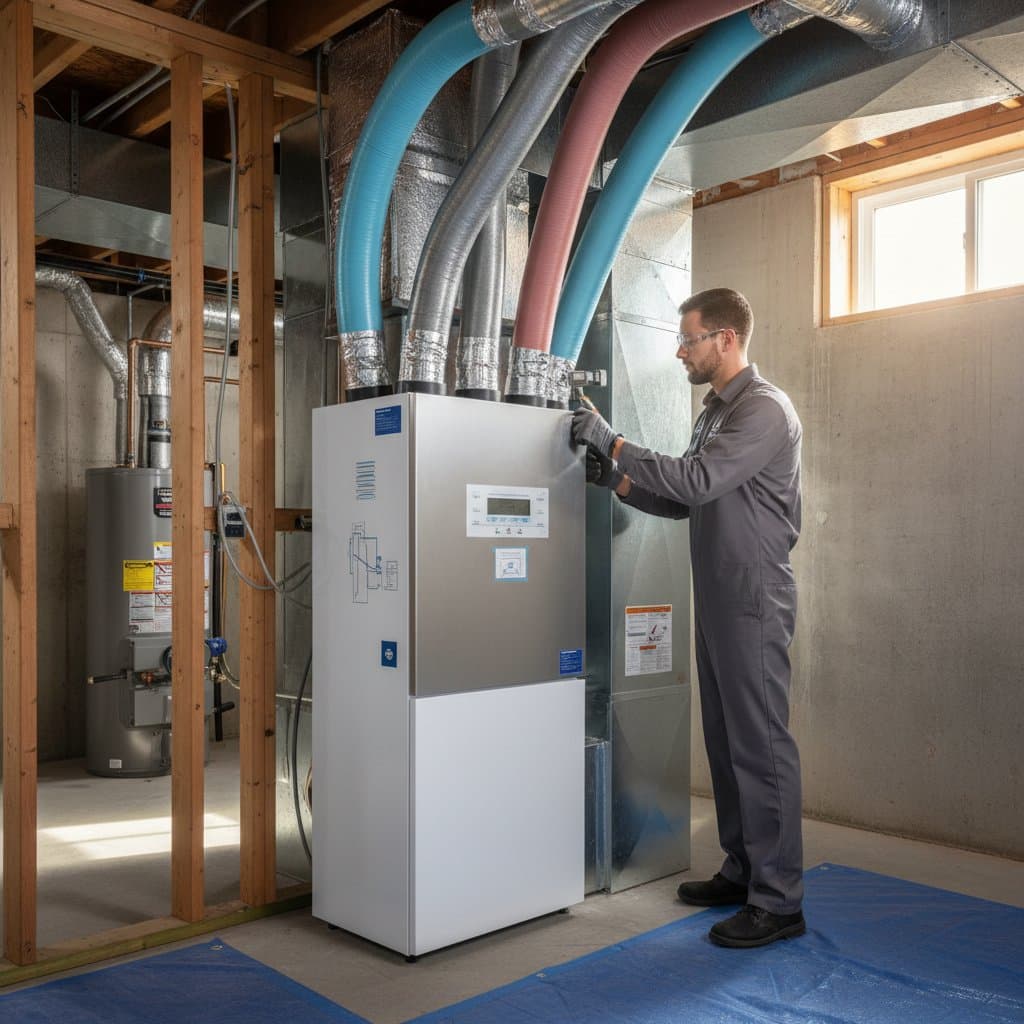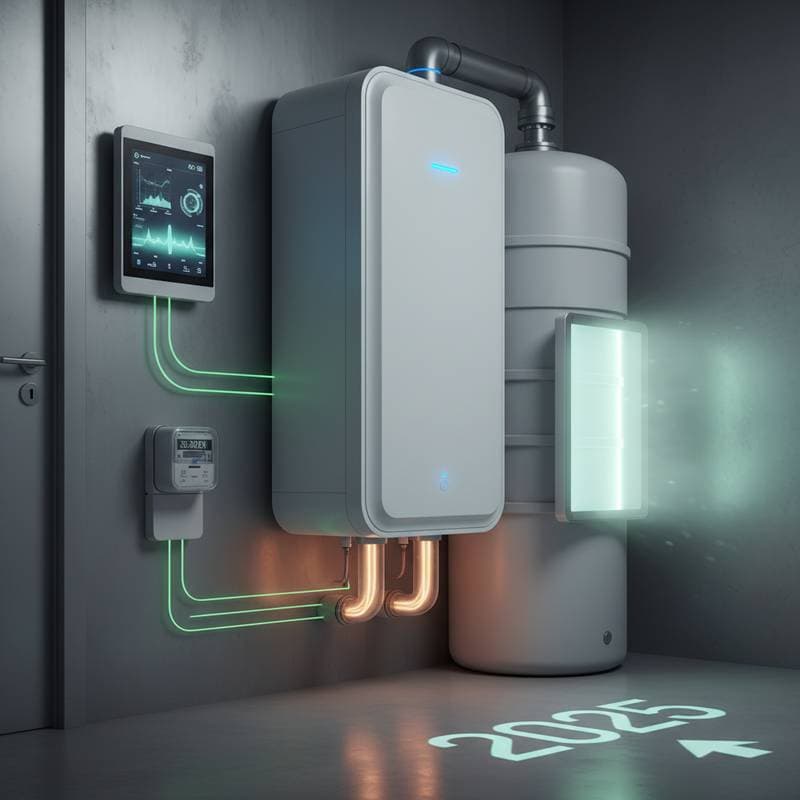How Innovative Technology Detects Heat Exchanger Cracks Before Carbon Monoxide Risks Emerge
Furnace safety remains a critical concern for homeowners, and advanced inspection technology now enables technicians to identify dangerous heat exchanger cracks at an early stage. A cracked heat exchanger poses a severe threat by potentially releasing carbon monoxide into living spaces. These modern diagnostic tools surpass traditional approaches by detecting issues well in advance, allowing for timely interventions that prevent emergencies.
This article details the mechanics of these detection systems, explores the root causes of heat exchanger cracks, highlights the role of early identification in enhancing carbon monoxide safety, and provides practical guidance for homeowners to maintain furnace reliability through consistent inspections and care.
The Importance of Detecting Heat Exchanger Cracks Early
The heat exchanger serves as the core component of a furnace, isolating combustion byproducts from the heated air distributed throughout the home. A crack in this unit permits toxic gases, including carbon monoxide, to infiltrate indoor environments. These gases prove undetectable to human senses due to their lack of color and odor, often leading to exposure without immediate awareness.
Conventional inspection techniques depend on visual examinations or observations of flame behavior, which typically identify cracks only after significant progression. Contemporary technologies employ thermal imaging, airflow monitoring, and acoustic evaluation to reveal subtle structural weaknesses far earlier. Such proactive measures facilitate prompt repairs, minimize system failures, and bolster overall household protection.
Mechanisms of Advanced Heat Exchanger Detection
State-of-the-art detection systems integrate sophisticated sensors and analytical software to monitor variations in temperature, acoustic signatures, and gas dynamics that signal emerging cracks.
Primary Detection Techniques
| Technique | Overview | Precision Level |
|---|---|---|
| Thermal Imaging | Employs infrared cameras to identify irregular heat distributions on the exchanger's surface. | High |
| Acoustic Analysis | Tracks vibrational frequencies to locate stress-induced micro-fractures. | Moderate to High |
| Gas Flow Sensors | Assesses discrepancies in air and combustion gas pressures to detect potential breaches. | High |
| AI-Driven Analytics | Processes inputs from various sensors to forecast crack development prior to manifestation. | Very High |
Integration of these techniques uncovers anomalies overlooked in routine visual assessments. Technicians subsequently validate results through pressure tests or endoscopic examinations.
Factors Leading to Heat Exchanger Cracks
Knowledge of crack origins aids in mitigation strategies. Several elements contribute to heat exchanger degradation:
- Metal fatigue resulting from repeated thermal expansion and contraction over time
- Airflow restrictions from clogged filters or obstructed ducts
- Installation errors that impose undue mechanical strain
- Excessive temperatures stemming from inadequate upkeep or faulty limit controls
- Deterioration associated with the unit's age, diminishing material integrity
Addressing these through scheduled maintenance and vigilant monitoring prolongs furnace longevity and mitigates hazards.
Linking Heat Exchanger Cracks to Carbon Monoxide Exposure
Damage to the heat exchanger enables carbon monoxide to blend with circulated air. Even minor escapes can trigger symptoms like headaches, vertigo, and gastrointestinal discomfort. Extended contact heightens the potential for severe health complications or fatalities.
Proactive detection technologies substantially lower these dangers by flagging issues before gas concentrations escalate. Homeowners must install carbon monoxide alarms on each floor, particularly adjacent to bedrooms, yet pairing these with annual professional evaluations and diagnostic innovations yields comprehensive safeguards.
Indicators of Emerging Furnace Issues
Although advanced tools streamline identification, vigilance for certain symptoms remains advisable:
- Unusual odors, such as a metallic scent, during furnace operation
- Accumulation of soot or staining near the unit or duct outlets
- Unsteady or yellowish flames rather than consistent blue ones
- Recurrent cycling interruptions or activation of safety mechanisms
- Reports of unexplained tiredness or migraines among household members
Prompt arrangement of a specialist evaluation proves vital upon observing any such indicators.
Frequently Asked Questions on Heat Exchanger Inspections
How Frequently Do Furnaces Require Inspection?
Professionals recommend an annual furnace inspection at the onset of each heating period. These evaluations uncover early cracks, confirm operational integrity, and optimize energy use. Properties with aging systems or intensive operation may necessitate biannual reviews.
What Follows Discovery of a Crack?
Upon verification of a crack, technicians deem repairs unfeasible due to safety concerns. Replacement of the heat exchanger or the complete furnace becomes necessary, guided by the unit's age and overall state. Operation of a compromised system risks carbon monoxide dissemination.
Is Self-Detection of Cracks Feasible for Homeowners?
Surface-level signs may appear evident, yet most fractures occur within inaccessible, enclosed sections. Homeowners lack the specialized instruments and expertise required for thorough internal assessments. Reliance on qualified HVAC experts ensures accurate diagnosis.
Do These Technologies Accelerate Inspection Processes?
Indeed, they shorten evaluation durations while elevating precision. Sensor-driven data collection streamlines technician workflows, reducing reliance on manual disassembly and enhancing diagnostic reliability.
Steps to Secure a Professional Furnace Inspection
Essential Inquiries for Service Providers
- Do your technicians hold certifications for heat exchanger evaluations?
- Which tools comprise your crack detection arsenal?
- Will you furnish a detailed written summary of findings?
- How do you confirm carbon monoxide security post-service?
- What fees apply to comprehensive safety assessments?
- Are maintenance subscriptions available that encompass yearly inspections?
- What duration characterizes a standard inspection?
- In cases of detected cracks, which replacement strategies do you propose?
Strategies for Sustained Furnace Reliability and Safety
Homeowners can safeguard their furnaces by adhering to a structured maintenance regimen. Replace air filters monthly during peak usage to prevent airflow impediments. Schedule professional cleanings to eliminate dust buildup that accelerates wear.
Monitor for operational irregularities and respond swiftly to any anomalies. Investing in systems equipped with integrated sensors offers ongoing vigilance. These practices not only avert carbon monoxide perils but also enhance efficiency, potentially lowering energy costs and extending equipment lifespan. Prioritizing such measures ensures a secure, comfortable home environment year-round.





